Archive for the ‘aesthetics’ Category
Art in Copenhagen’s Meat Packing District
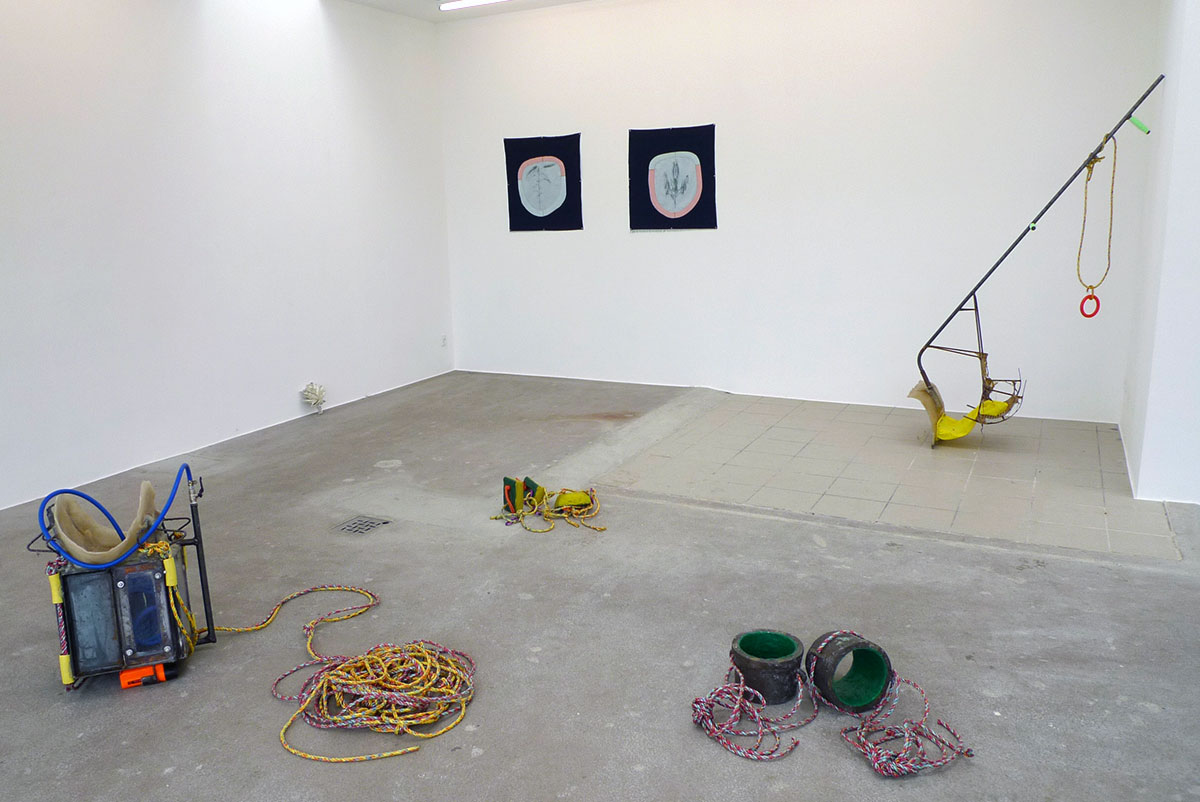
Sculptures by Emil Toldbod at Gether Contemporary
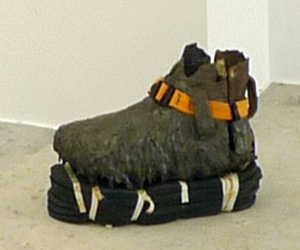 Gether Contemporary’s “Beneath the Surface” features the work of five young artists from the Royal Danish Academy of Fine Arts; Esben Gyldenløve, Oskar Jakobsen, Christine Overvad, Emil Toldbod and Nicky Sparre Ulrich. The only work that caught my imagination were the mixed-media sculptures by Emil Toldbod that comprise a series titled “Second Dive: Entering Another World”. Apparently the sculptures are employed in a film in which he wears and uses the sculptures to walk the surface of the sea digging through it’s ground. Below is what I imaging to be a test video in which he wears weighted boots to try and walk along the bottom of a swimming pool. The shoes in the video are pictured to the left.
Gether Contemporary’s “Beneath the Surface” features the work of five young artists from the Royal Danish Academy of Fine Arts; Esben Gyldenløve, Oskar Jakobsen, Christine Overvad, Emil Toldbod and Nicky Sparre Ulrich. The only work that caught my imagination were the mixed-media sculptures by Emil Toldbod that comprise a series titled “Second Dive: Entering Another World”. Apparently the sculptures are employed in a film in which he wears and uses the sculptures to walk the surface of the sea digging through it’s ground. Below is what I imaging to be a test video in which he wears weighted boots to try and walk along the bottom of a swimming pool. The shoes in the video are pictured to the left.
At the bottom left of the image is a helmet that Emil wears in his film and to the right is a shovel that he pushes along the sea’s bottom. To the right of the helmet, are concrete rings that he wears on his thighs and in the back concrete weights that he drags along to help him remain below the water surface. The sculptures immediately brought to mind the literary genre Speculative Fiction as the artist crafted survival tools from found objects to allow him to trove the bottom of the sea after the waters have risen over much of the continents. These are make-shift tools assembled and crafted by impoverished survivors of a not so distant future that will help them continue living from the debris of past civilization. As I know nothing about the film or “Second Dive: Entering Another World” other than seeing a few sculptures on view at Gether Contemporary and a still on the Gether site, I’m just making all this up in contemplating Emil Toldbod’s work.
1. Første skridt i min søgen efter det omvendt drejede sneglehus. from Emil Toldbod on Vimeo.
Above Gether Contemporary in Copenhagen’s Meat Packing district is Galleri Bo Bjeggard where I enjoyed the whimsical exhibition “Flowers for Poul” (PDF catalog for “Flowers of Poul”). “Flowers for Poul” celebrates the 90th birthday of deceased artist Poul Gernes by presenting the work of John Armleder, Cosima von Bonin, Paul Fagerskiold, Callum Innes, SUPERFLEX, Janaina Tscape and Eriwn Wurm as well as work by Poul Gernes. Flowers for Poul The exhibition is beautifully installed and visually engaging as large colorful works keep the viewer engaged from room to room. The works that stood out to me are SUPERFLEX’s “Information Machine” and “Commons Machine”. Although these pieces are simple and don’t function very well, particularly the make shift tops of “Information Machine” the pieces allow for simple interactivity that inanely reflect on our networked society.
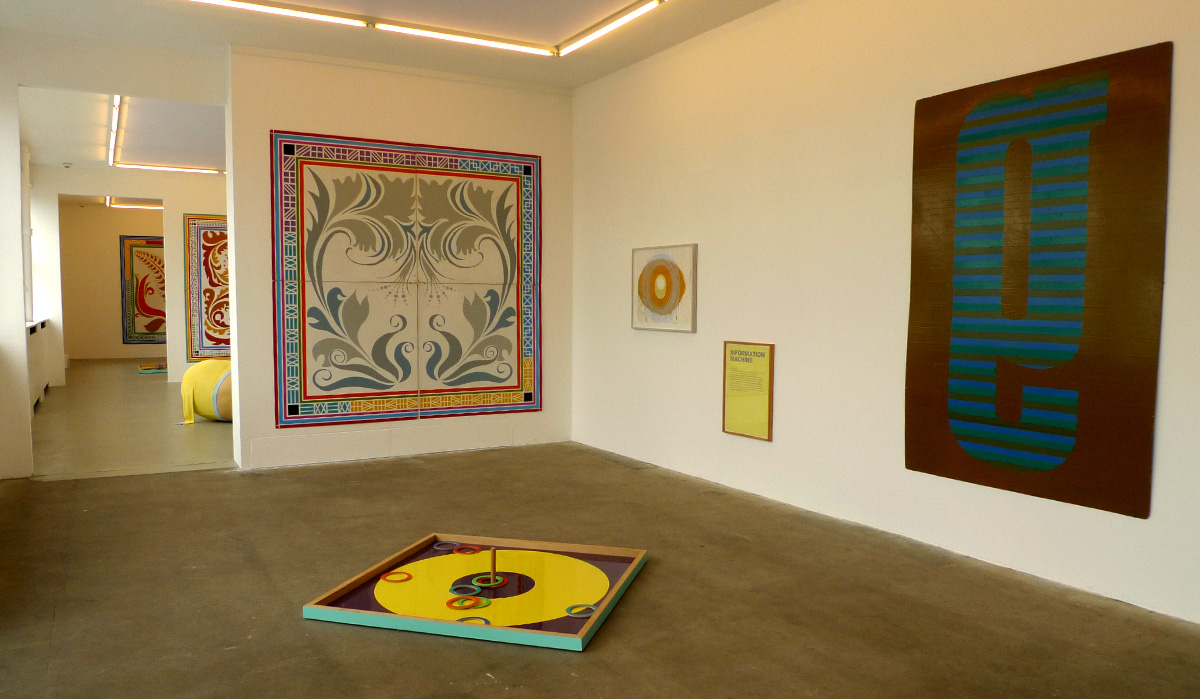
SUPERFLEX’S “INFORMATION MACHINE” “models the struggle between the desire to share information and the desire to contain information. Player A (represents the desire to share information) plays against Player B (represented by the pole in the middle) to choose between sharing information or containing information. The player with the most rings on the pole wins. If there are no rings on the pole the people do not have to choose between sharing information or containing information. The game is endless.” As described by SUPERFLEX, the players are our desire to share as well as contain information and their goal is to have us engage.
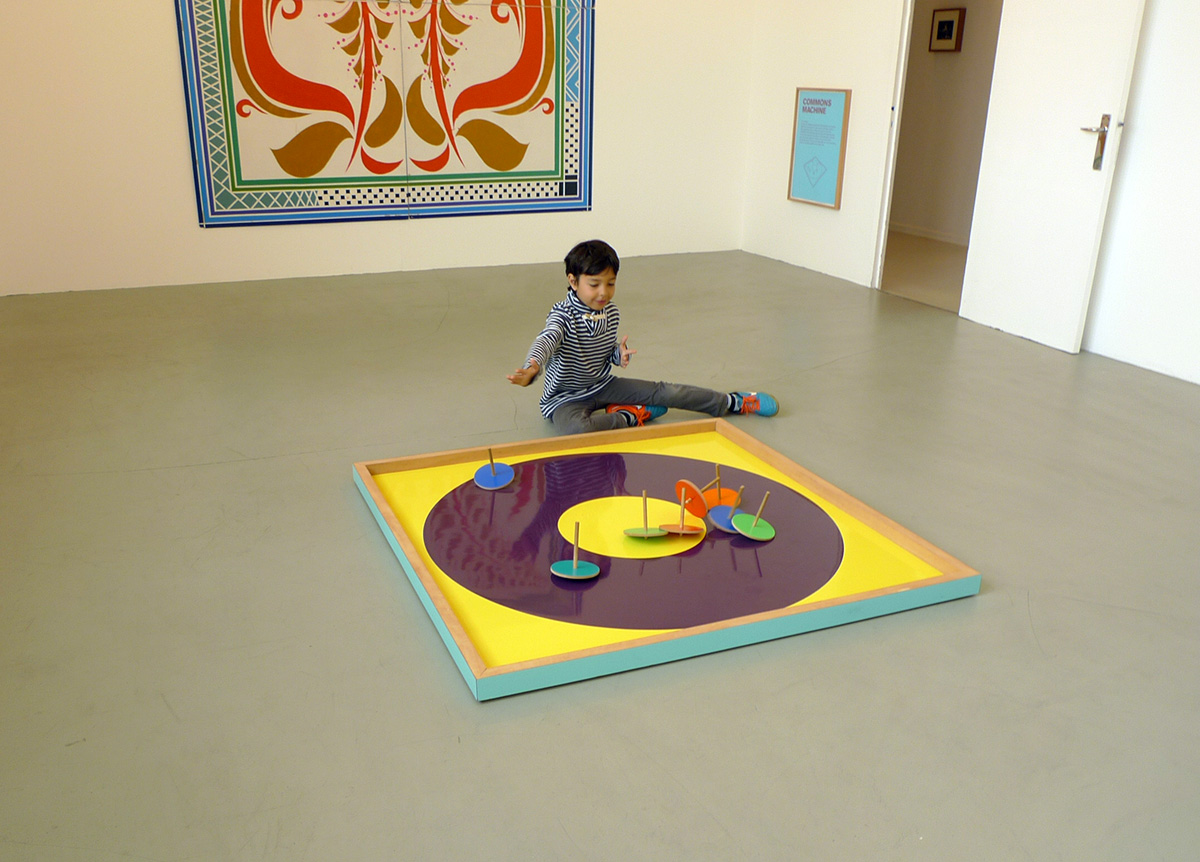
COMMONS MACHINE, I would enjoy a lot more if the tops actually worked. Built for 2-10 players acting as “software programmers are working together to develop an open-source system. The programmers are contributing by launching their SPINNING TOPs with open source codes (the spinning top). The source code must not end up in the proprietary domain area (the yellow area) but remain in the common area (the purple area). If any source code ends up in the proprietary area, the operating system is no longer free.” Unfortunately, the tops don’t really spin, it’s art.
From Bo Bjerggaard we walked over to V1 Contemporary Art Center which featured the art of two artists who began their careers as grafiti and tag artists in the Eighties – Barry McGee and Todd James. Their work is well documented and critiques, so I’m only including a few images more so for my own visual archive. I love Barry McGee’s patterns and the simplicity of Todd James’s fantasy drawings in his zine “Beyond the Gates” of viking-like warrior women.
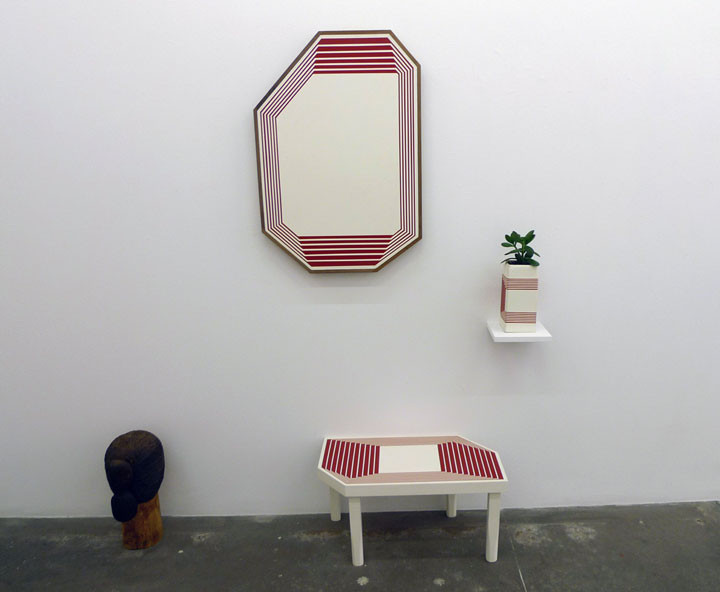
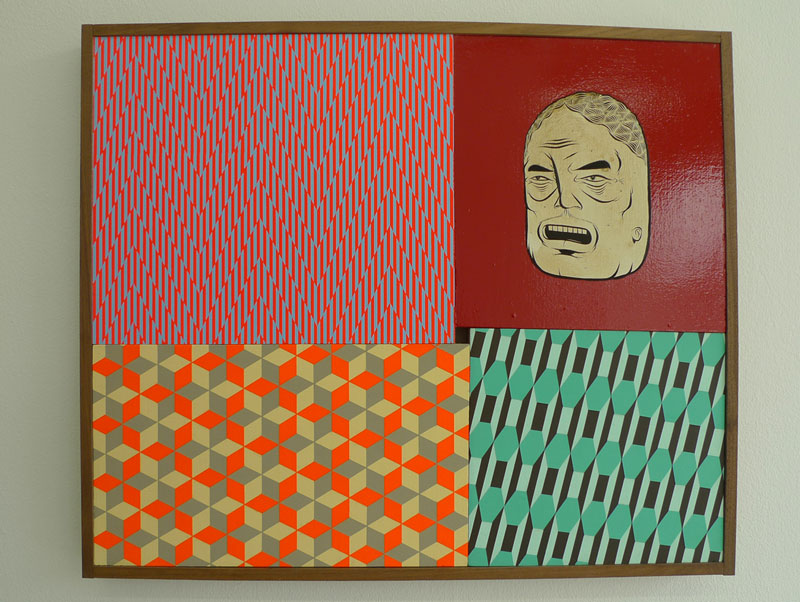
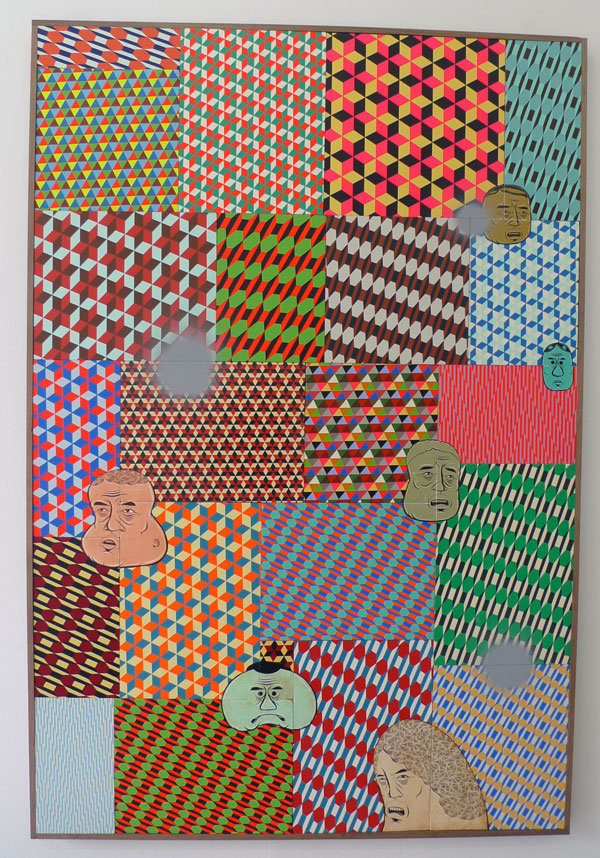
Todd James’s drawings are powerful in their printed comic format, I do not find the paintings at all interesting.
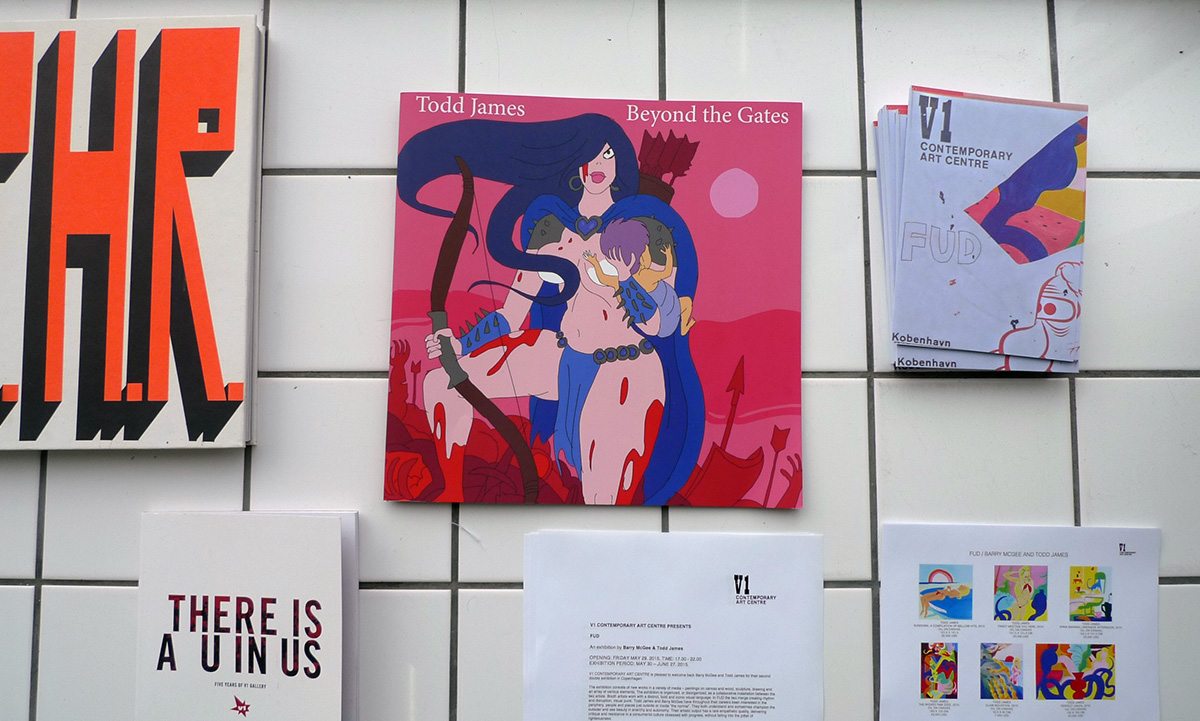
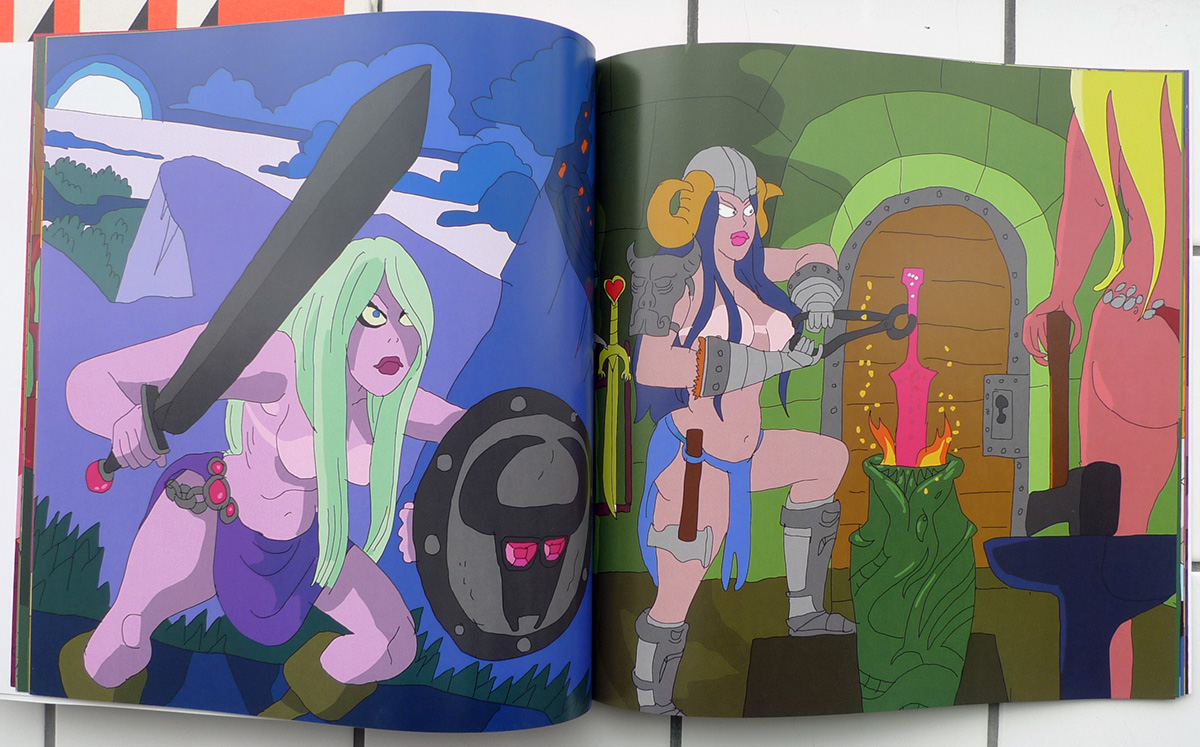
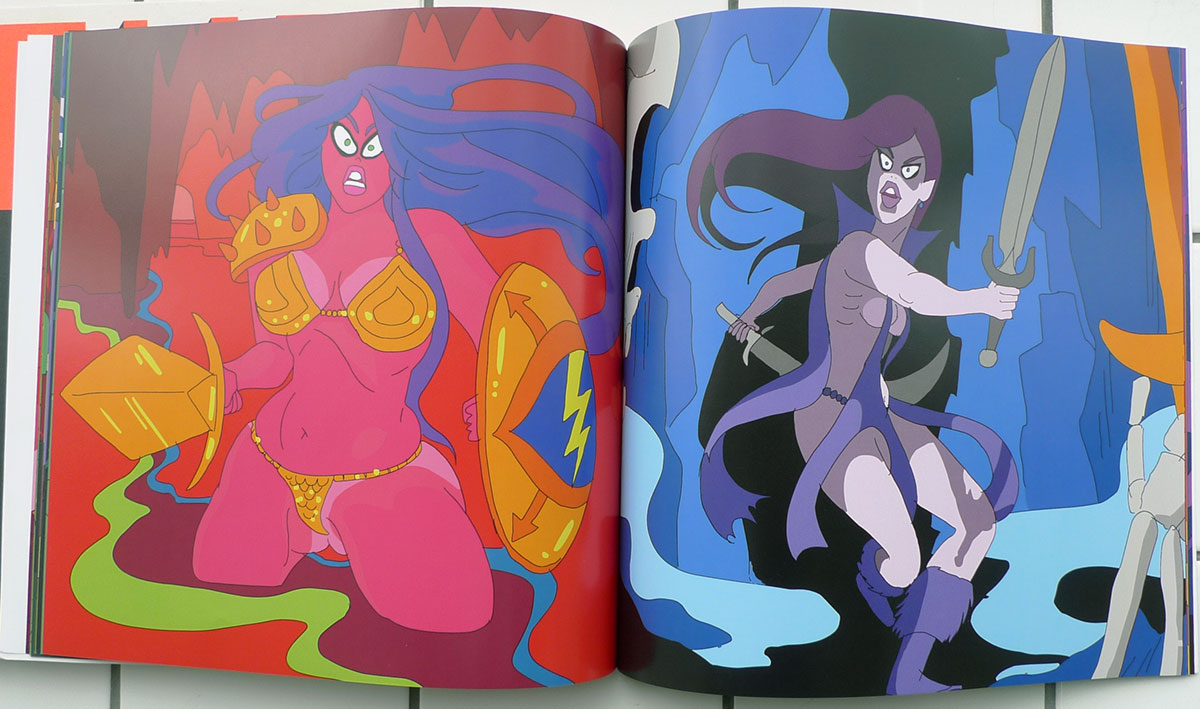
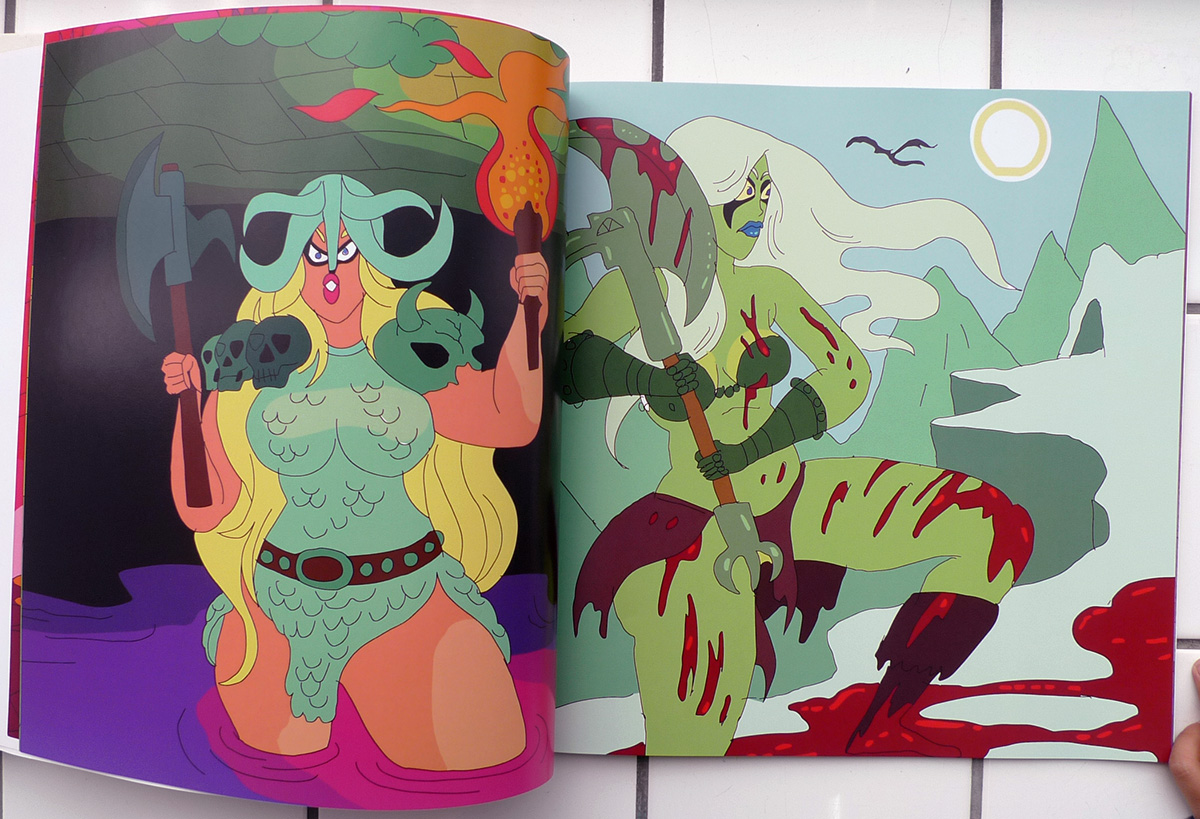
Boring…
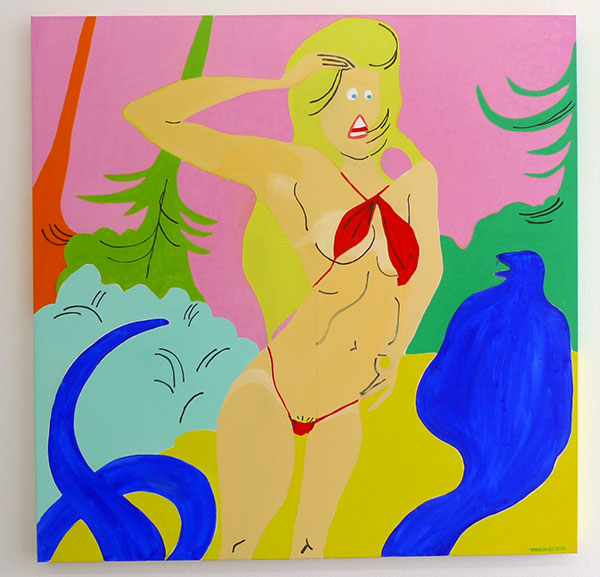
“Drifting in Daylight” at Harlem Meer
After getting lost in beautifully tucked away trails toward the north west corner of Central Park, the discovery of the S.S. Hangover made for successful end of art hunting in Central Park this past Saturday. The only one disappointed in our group of six art viewers was the 5 year old who had envisioned riding the boat along the lake as the music played. Fortunately the soft pleasant music performed from the boat by the brass sextet calmed our disillusioned interactive art connoisseur.
Upon studying the ship, my 6 year old immediately asked why there was a fat unicorn on the sail. A Creative Time attendant, corrected him that it was not a unicorn, but the winged horse, Pegasus from the myth of Hercules. To everyone’s disappointment, she went on to explain that the fat Pegasus represents the struggling artist who has gotten older and is unable to achieve artistic recognition and glory. I immediately wondered why the artist had to take a nice performative piece and stamp it with such a trite concept.
The boat appeared to circle around a small island as it performed a piece by Kjartan Sveinsson. We only remained for iterations that were relaxing and pleasant. As we continued to walk around the Harlem Meer, we encountered Karyn Olivier’s “Here and Now/Glacier, Shard, Rock” – a lenticular signboard that shifts between photographs of the immediate environment behind the billboard, a glacier and pottery shard that resembled a Western classical pottery work.
Upon exiting Harlem Meer and Central Park on the east side, we encountered Spencer Finch’s “Sunset (Central Park)” – a soft-serve ice cream truck that employs solar panels to cool and power the soft-swerve. The line for the free ice-cream was far too long for us to experience the solar-cooled ice cream.
Overall the work that we encountered was poetic and relaxing at a time when so much of the immediate social issues carry friction, stress and the growing schism between the rich and poor on our earth.
That Angry Inch – Putin’s Twitch
I’ve been following closely the dispute between Russia and the Ukraine regarding Crimea. At first, it seemed to be no more than a power grab by Russia for all sorts of reasons from capitalist power to cultural identity to saving face from a post cold-war reality. I’m not sure that this is not all true from the perspective of Russia, however, from the view of those who dissented and revolted against the Ukraine, it seems even more complex. Without living the reality, who knows, however from a distant observation, I couldn’t help, but create the GIF below.
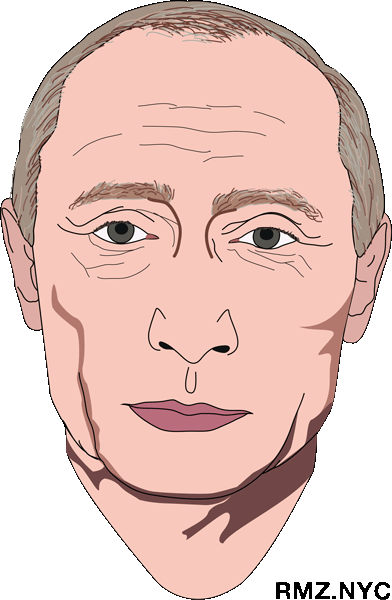
Putin’s Twitch
There’s more to come soon!
Charif Kiwan of Abounaddara collective at Hunter College
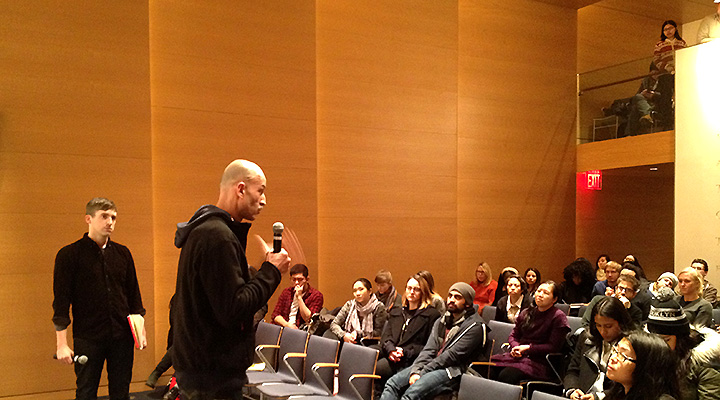
Charif Kiwan of Abounaddara collective at Hunter’s Roosevelt House in discussion with Jason Fox and Hunter students, 19 February, 2015
Hunter College Media Studies professor, Jason Fox invited Charif Kiwan of the Abounaddara Syrian video collective to screen a compilation film and speak with Hunter Students. The evening made for a powerful and eye-opening exchange.
Inspired by Dziga Vertov’s “Man with a Movie Camera” (1929), Abounaddara is Arabic for “man with glasses.” Charif Kiwan is the collective’s representative who no longer lives in Syria and has no plans to return. Osama al-Habali, one member of the collective has been imprisoned for the past year and a half, however the collective continues with its mission to produce and post one video a week depicting Syrian life at a time of war.
As Charif described the work of Abounaddara, the collective’s goals are simple:
1. Produce and post one video per week that captures Syrian life at this time of war. Kiwan referred to this practice as “emergency cinema.”
2. Defend the “right to the image” as a basic human right.
The outcome of these goals are to inform and motivate others to find a way to help a people in crisis and to create an archive that portrays every-day life in Syria at this moment. The French-German television network arte commissioned the nearly hour-long compilation of Abounaddara’s videos that was screened at the Roosevelt House.
Although Charif claimed that the anonymous video collective attempts to capture all sides of Syrian life and in doing so give voice to members within the Bashar al-Assad regime and the Islamic State as well as to the rebels and the victims of the ongoing conflict, the compilation is most strongly a call to end the violence and suffering.
Amongst the most powerful shorts in the compilation are “Children of Halfaya” and “SYRIA: Snapshots of History in the making” both are embedded below. “Children of Halfaya” captures boys in a refugee camp in Lebanon, the oldest boy recalls bombing massacres, including that of his school. And “SYRIA: Snapshots of History in the making” captures a young man retelling the moment that he became an activist and the empowerment of protest, however, he must pause as his interview is interrupted by bombing.
Children of Halfaya from abou naddara on Vimeo.
Syria : Snapshots of History in the making from abou naddara on Vimeo.
Whereas other videos posted to Vimeo, merely capture moments in everyday life, such as young people enjoying a street concert (this video was not included in the compilation):
The Wall from abou naddara on Vimeo.
Charif Kiwan pleaded to the audience to act, to engage and to work toward a better world. The video compilation captured diverse perspectives, however, the message appeared clear – the United States must intervene in Syria. It is the moral imperative to end the killing. Charif stated that Syrians are strongly against imperialism, and he seemed to imply an understanding of the price that a U.S. intervention would cost Syria and it’s culture. The current reality of human massacre, suffering and exodus necessitates intervention by foreign powers.
HTML5 Sketch – “God Walks”
Over the last couple of years, I’ve been doing small web sketches comprised of photos that I’ve shot and animations or illustrations that I’ve done. Since the Charlie Hebdo attack, I’ve been thinking about God or higher being in its most popular forms which lead to a visual idea that I quickly assembled. Below is the rotoscope loop of a male nude walking with a rotation of the heads of primary religious figures as popularly depicted. And here’s the gif embedded in an HTML page with music and 3d effects walking through digital space…
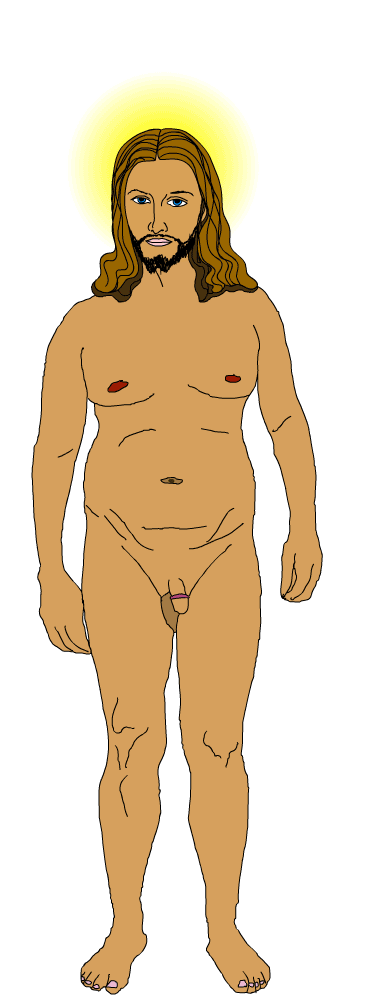
God Walks
Nicolás Dumit Estévez Interviews Ricardo Miranda Zúñiga
 As part of the exhibition “PLAYING WITH FIRE: Political Interventions, Dissident Acts, and Mischievous Actions” at El Museo del Barrio several interviews were conducted with the artists concerning their practice. Below is the interview that the curator Nicolás Dumit Estévez conducted with me for the exhibition. The exhibition continues on view until February 7th.
As part of the exhibition “PLAYING WITH FIRE: Political Interventions, Dissident Acts, and Mischievous Actions” at El Museo del Barrio several interviews were conducted with the artists concerning their practice. Below is the interview that the curator Nicolás Dumit Estévez conducted with me for the exhibition. The exhibition continues on view until February 7th.
NDE: Can you talk about the use of firearms in On Transmitting Ideology?
RMZ: Through the amplification of mass media, ideological rhetoric is a powerful cultural weapon. I wanted to make as transparent as possible the power of ideological speech and its transmission through the media; mounting the radios on to the forms of AK47s and Uzis immediately triggers this link – the transmission of ideological speech is a political weapon.
NDE: I had the opportunity to see images of the performance of On Transmitting Ideology in Berlin, Germany. What were some of the reactions from passersby? My understanding is that people in the streets encountered you, as well as a small cadre of performers carrying wooden AK47s? How did you go about recruiting participants to your piece?
RMZ: The march was one act of a 24 hour sound performance titled “Moving Forest” that was commissioned for “transmediale.08: CONSPIRE…” an annual art and digital culture festival in Berlin. The performance and call for participants was circulated during the festival, so it was festival participants that volunteered to be part of the performance. The march of 20 participants was from Haus der Kulturen der Welt to the public park Siegessäule with a stop by the mayor’s home. My constant fear was that of authorities stoping us, but police merely looked at us with disinterest. Also most pedestrians merely paused to watch us, some asked what we were doing and when English speaking, we had them listen to the audio montage. People who did so, generally understood the work and were only surprised by the extremism spoken in the historically famous speeches.
NDE: There is a great deal of debate between those who advocate for guns and those who want to ban them . I am wondering how On Transmitting Ideology may or may not position itself in the context of this push and pull.
RMZ: The representation of the gun is to reflect the violent nature of ideology and if one is to listen to the audio montage, it capture extremism. I consider both violence and extremism as negative characteristics of society. The reading of the work that is most in line with my goal in creating the work is that we as a society need to move away from both weapons and ideological extremisms – political and religious.
NDE: What are your thoughts about the politization of aesthetics. It has come to my attention that, while it is fashionable to make “political” work, politics are not a hip subject in the art world?
RMZ: I have little interest in the art world. I’m much more interested in art that exists outside of the art world; art that engages people who are not seeking art and may function outside the gallery or museum. I’m interested in art that attempts to weave itself into the fiber of everyday culture while investigating, questioning and perhaps critiquing normative culture to stir self reflection. Much of the exchange in the art world is to decorate the homes of the wealthy or perhaps to serve as an investment for the wealthy. Perhaps for the art collector, investing in work that portrays current day politics is a bad long-term investment choice and not the best home decoration. If art world work is political, it needs to be sufficiently abstracted or undefined to function as a commodity object, so that any political potential has been muted.
NDE: Making political art work entails a big responsibility and a challenge as well. How can art that is politically-conscious live beyond the art world and effect change in society at large? And is this the role of the artist?
RMZ: This is a tough questions, because I don’t know how one would measure the effect of politically charged work upon others whom it may inspire to act. I believe that as long as the drive to create political art is sincere – that the artist is compelled to make political art due to first-hand experience of injustice, inequality, the misuse of power, it is not the role of the artist to effect change. The role of the artist is to capture and convey.
This interview is part of Crossfire, a project conceived and edited by Nicolás Dumit Estévez for El Museo del Barrio.
Neo Rauch at David Zwirner
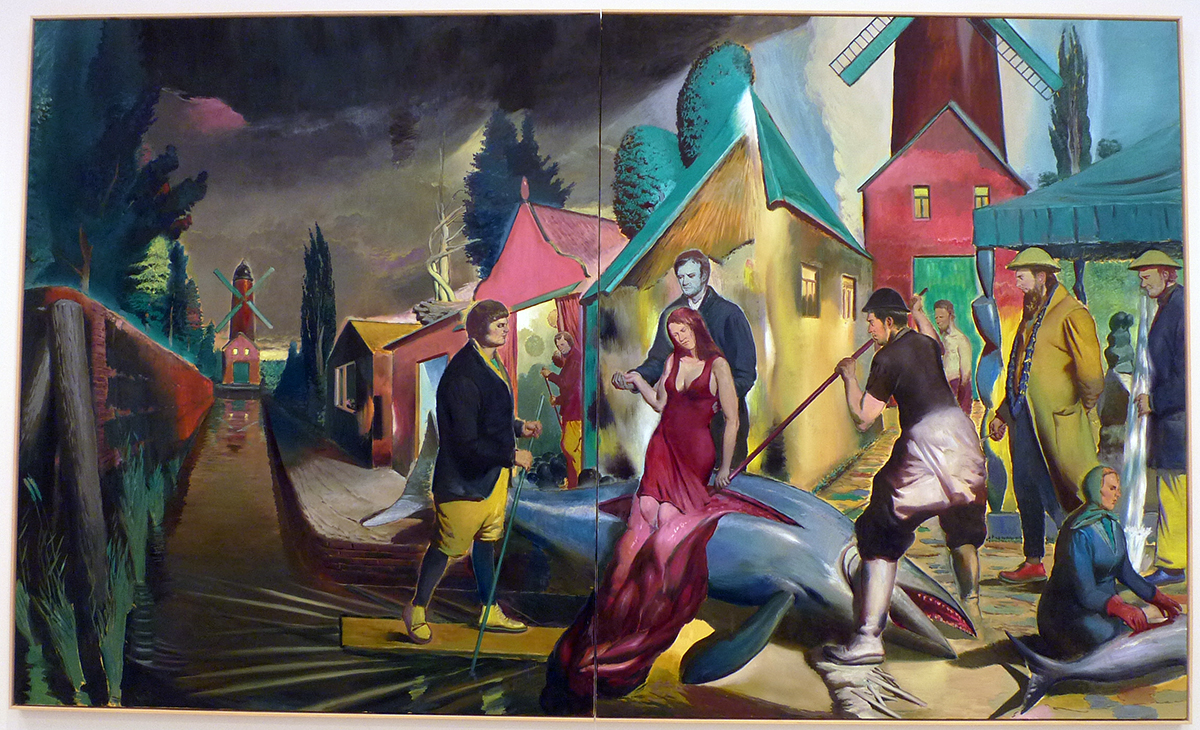
Neo Rauch 2014
Beyond the execution is the literary and metaphoric power of these paintings. The new works of Neo Rauch are amazing! Below is a selection of Neo Rauch current paintings at Zwirner.
g
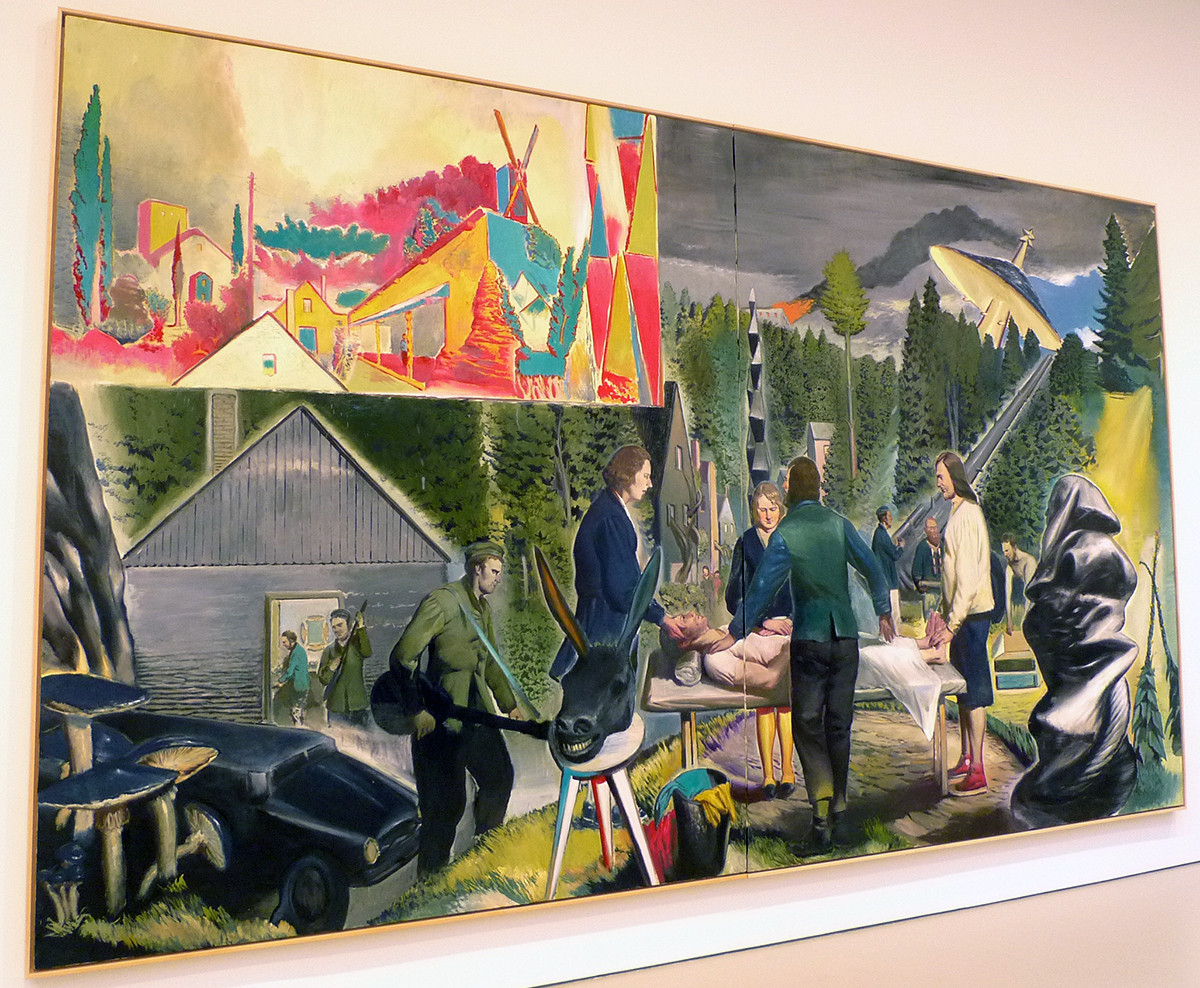
Neo Rauch 2014
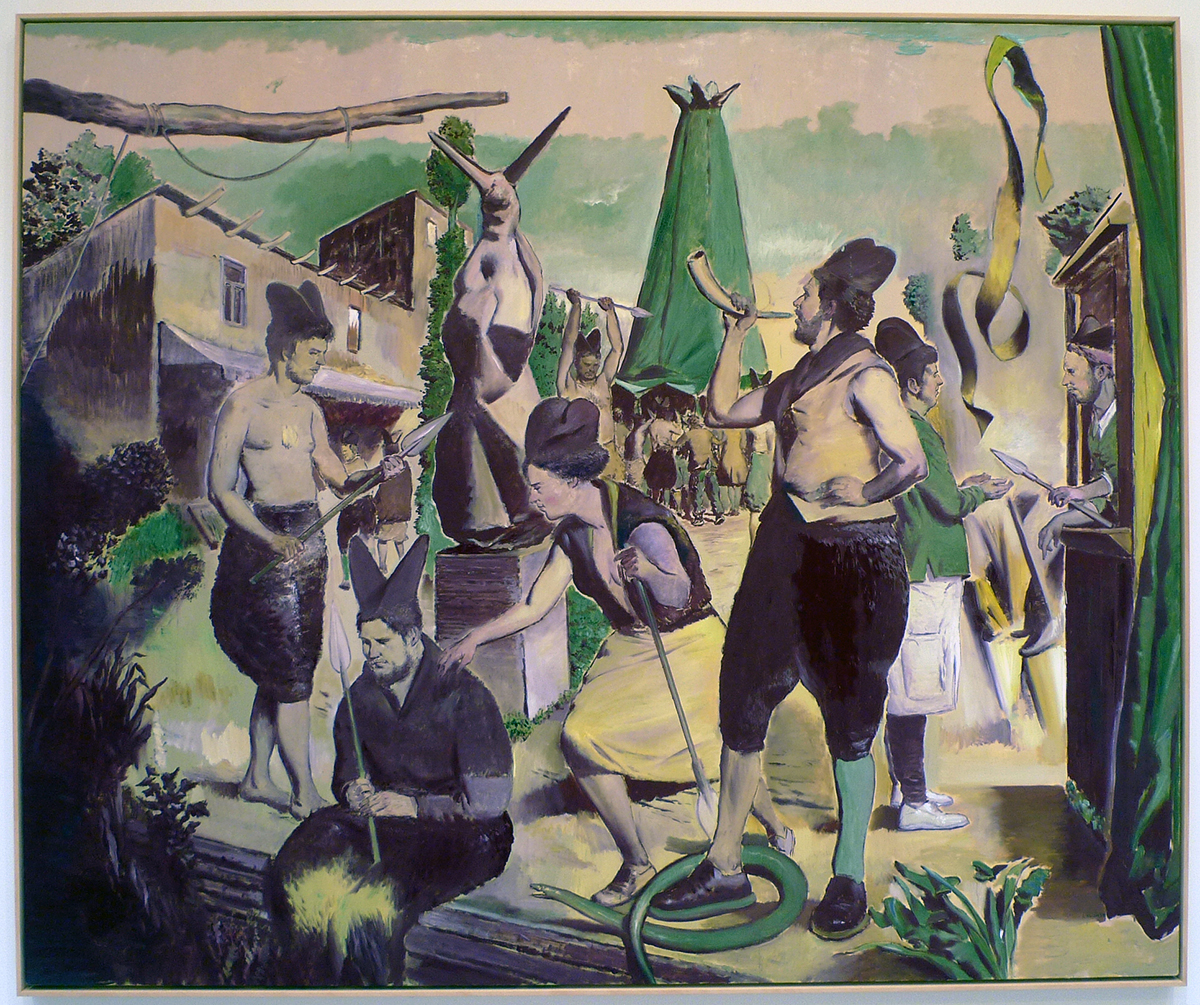
Neo Rauch 2014
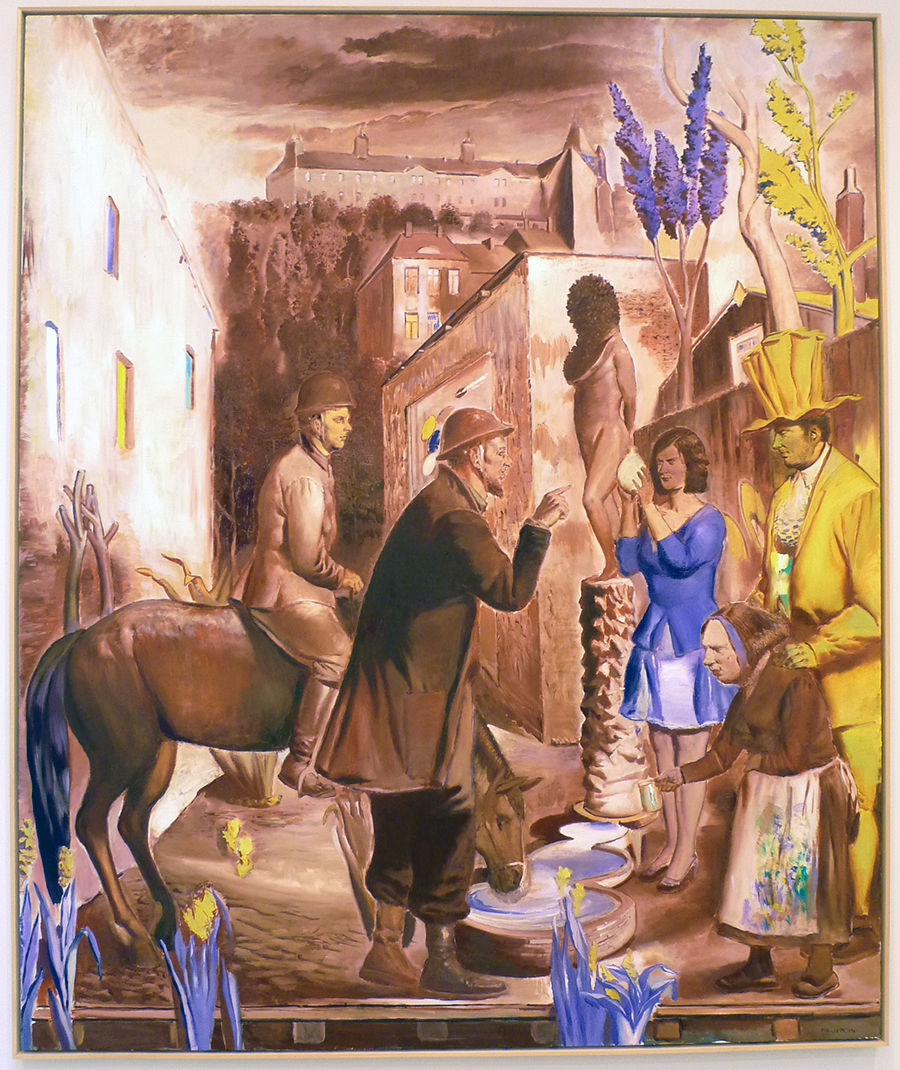
Neo Rauch 2014
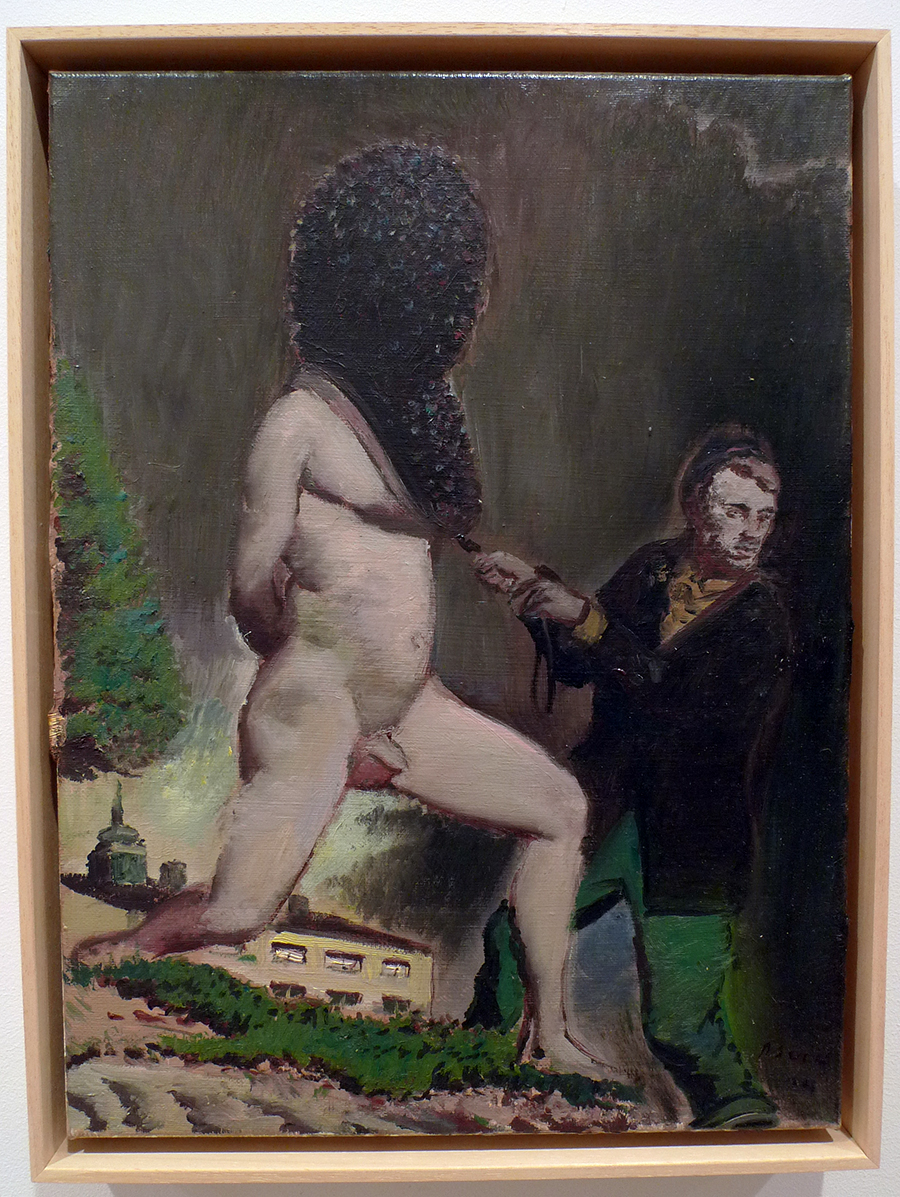
Neo Rauch 2014

Neo Rauch 2014

Neo Rauch 2014
Hong Kong Glitch
A series of glitch images from Hong Kong Pro-Democracy Protests.

Hong Kong Glitch

Hong Kong Glitch

Hong Kong Glitch

Hong Kong Glitch

Hong Kong Glitch

Hong Kong Glitch
On Transmitting Ideology at El Museo del Barrio

On Transmitting Ideology
11 radio guns from “On Transmitting Ideology” will be on view as part of the exhibition “PLAYING WITH FIRE: Political Interventions, Dissident Acts, and Mischievous Actions” curated by Nicolás Dumit Estévez at El Museo del Barrio from September 6, 2014 – January 3, 2015.
The installation presents eleven wooden guns outfitted with radios broadcasting declarations on freedom and transformation in our society. The broadcast is an audio montage composed from snippets and portions of speeches by Calvin Coolidge, Reagan, Obama, MLK, Enoch Powell, Malcolm X, MacArthur, George Wallace (former governor of Alabama), Barry Goldwater, William F. Buckley and Noam Chomsky – speeches that have helped define contemporary conservative vs liberal ideology. The audio montage is available online: http://ambriente.com/ideology/
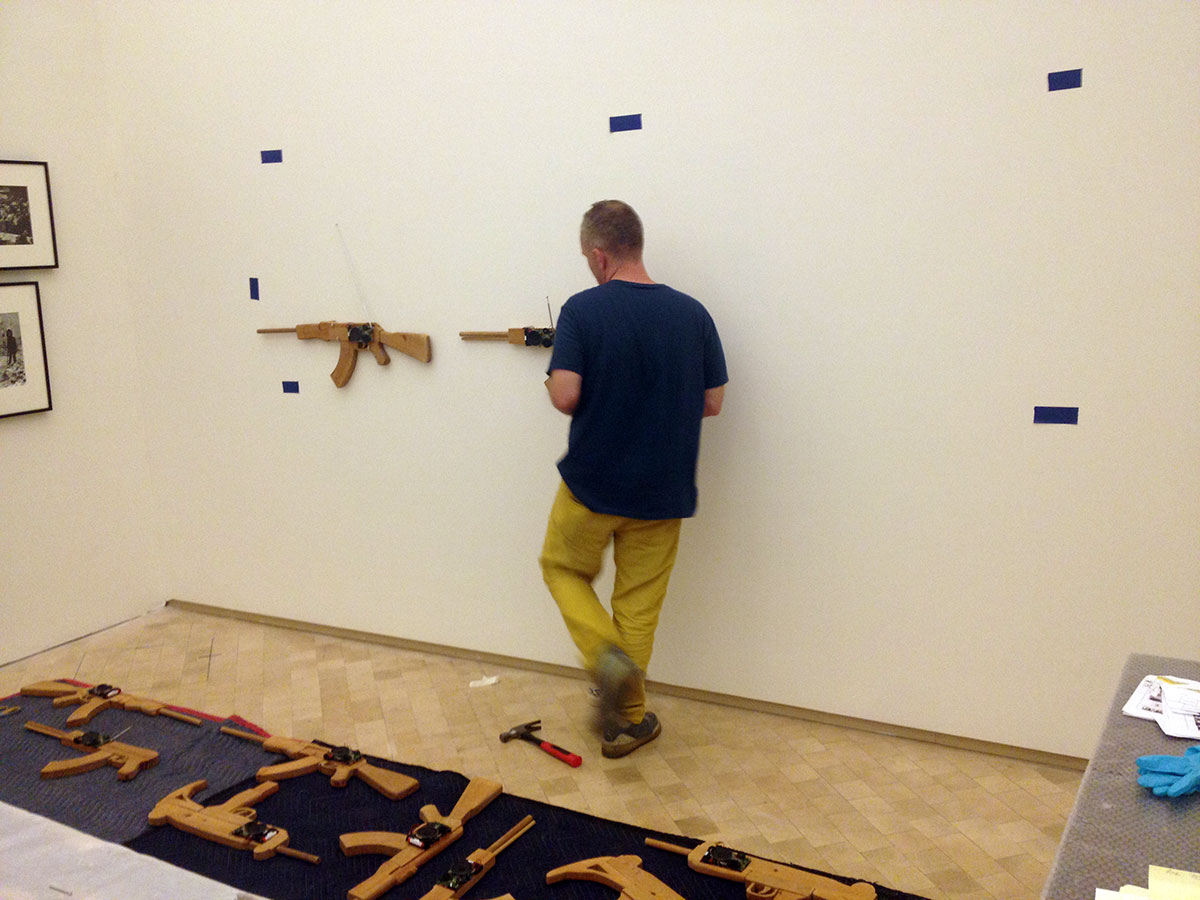
Installing “On Transmitting Ideology” at El Museo’s Carmen Ana Unanue gallery, September 3rd, 2014